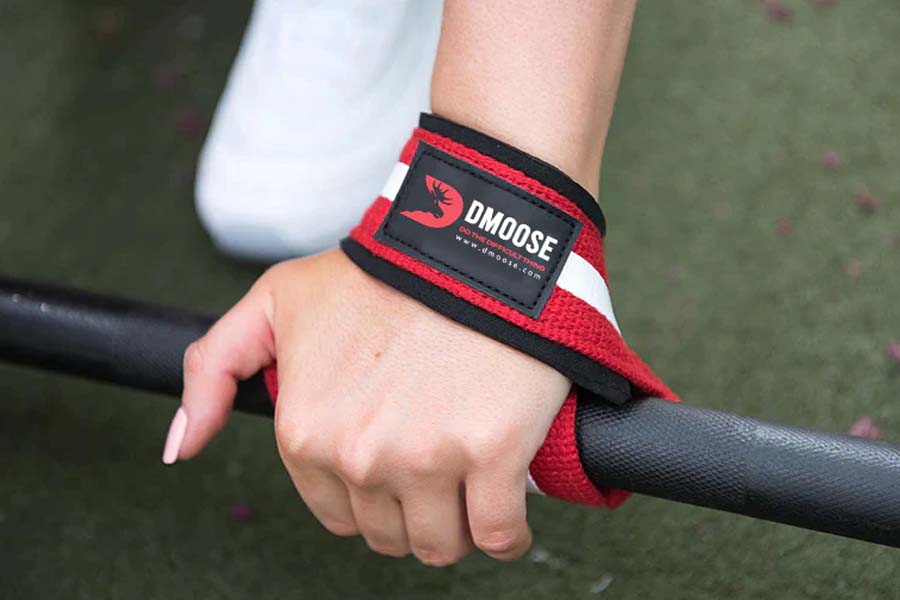Weightlifting is a popular activity requiring a lot of physical strength and control. One of the essential aspects of weightlifting is grip strength, which is the ability to hold onto and control the weight being lifted.
Grip strength is essential for maintaining proper form during lifts, preventing injury, and allowing for maximum lifting potential.
Lifting grips and lifting straps are two tools that can be used to improve grip strength and control during weightlifting. Lifting grips are small gloves or straps worn on the hands to improve grip and prevent slippage.
Lifting straps, on the other hand, are long straps wrapped around the barbell or dumbbell and then around the lifter's wrists to provide support and prevent slippage.
This article will provide an overview of CrossFit grips and lifting straps and help lifters decide which tool is best for them based on their individual goals, experience, and training objectives.
We will explore the pros and cons of each tool and provide recommendations for when each should be used.
Related Article: Must-Read Workout Tips for Beginners
CrossFit Lifting Grips
CrossFit is a high-intensity training program that requires a lot of physical strength and endurance.
One of the most important aspects of CrossFit training is grip strength, which is essential for holding onto equipment, maintaining proper form during lifts, and preventing injury. This is where CrossFit lifting grips come into play.
CrossFit Grips are designed to improve grip strength and control during weightlifting exercises. They are made of durable materials that provide a comfortable and secure grip, even when the hands are sweaty or tired.
Unlike traditional lifting gloves, CrossFit lifting grips expose the fingers, allowing for a better grip and a more natural feel. Using CrossFit lifting grips has many benefits for CrossFit athletes.
First and foremost, they provide better grip strength and control, allowing athletes to focus on their form and lift heavier weights. They also help prevent hand blisters and calluses, which can be painful and make it difficult to continue training.
Another advantage of CrossFit lifting grips is that they are easy to use and can be quickly and easily attached to any barbell or dumbbell. Athletes can focus more on their training and less worrying about their grip.
In addition to their practical benefits, CrossFit lifting grips are also stylish and customizable. They come in various colors and designs, allowing athletes to express their style while training. This makes them an excellent gift for CrossFit enthusiasts or a treat for oneself.
In conclusion, CrossFit lifting grips are valuable for anyone looking to improve their grip strength and control during weightlifting exercises. They offer many practical benefits, including better grip, improved form, and reduced risk of injury.
They are also customizable and stylish, making them a great addition to any CrossFit athletes training gear. Don't let weak grip strength hold you back from achieving your CrossFit goals - invest in a pair of CrossFit lifting grips today!
Lifting Straps
Lifting Straps for Weightlifting is another tool to improve grip strength and control during weightlifting exercises.
They are long straps made of durable materials wrapped around the barbell or dumbbell and then around the lifter's wrists. Lifting straps provide support and prevent slippage, making it easier to lift heavier weights.
Using lifting straps has many benefits for weightlifters. First and foremost, they allow for heavier lifting, which can help increase muscle size and strength.
They also reduce the risk of injury by providing a secure grip on the weight being lifted. Lifting straps can be particularly helpful for deadlifts, where grip strength can be a limiting factor.
Another advantage of lifting straps is that they help reduce hand fatigue during lifting sessions. This is especially important for athletes training for long periods or multiple times per day.
By reducing hand fatigue, lifting straps allow athletes to focus on their form and lifting technique, leading to better results.
While lifting straps offers many benefits, they also have some drawbacks. One potential downside is that they can hinder grip strength development over time.
By providing support and reducing the need for grip strength during lifts, lifting straps may cause lifters to rely too heavily on the straps and not develop their grip strength to its full potential.
Additionally, some competitions do not allow lifting straps, which means that athletes who rely on them may be unable to compete in certain events.
In conclusion, lifting straps are helpful for weightlifters looking to increase their lifting potential and reduce the risk of injury. They support and prevent slippage, allowing athletes to focus on their form and lifting technique.
However, lifters should be aware of the potential drawbacks of lifting straps, including the risk of hindering grip strength development over time and not being allowed in specific competitions.
Using lifting straps appropriately and in conjunction with other grip-strength training methods is essential to achieve the best possible results.
Which Tool Should You Use?
When deciding whether to use lifting grips or lifting straps, it is essential to consider your fitness goals, experience, and training objectives. Both tools have advantages and drawbacks, and the best choice will depend on the specific needs and preferences of the lifter.
For beginners or those just starting with weightlifting, lifting grips may be the best option. They are easy to use and provide a comfortable and secure grip on the weight being lifted.
Lifting grips can also help prevent hand blisters and calluses, which can be particularly important for those not yet accustomed to weightlifting.
For CrossFit athletes or those who are focused on improving their grip strength, CrossFit lifting grips may be the best choice. They offer improved grip strength and control, allowing for a more natural feel when lifting.
CrossFit lifting grips are also customizable and stylish, making them a great addition to any CrossFit athlete's training gear.
Lifting straps may be the better option for those focused on increasing their lifting potential and lifting heavier weights.
Lifting straps provide support and prevent slippage, making it easier to lift heavier weights without worrying about grip strength limitations. However, lifters should be aware of the potential drawbacks of lifting straps, including the risk of hindering grip strength development over time.
Ultimately, the decision to use lifting grips or lifting straps will depend on your individual needs and goals. It is crucial to consider each tool's advantages and drawbacks and use them appropriately and in conjunction with other grip strength training methods to achieve the best possible results.
With the right tools and training, you can achieve your weightlifting goals and improve your overall strength and fitness.
Related Article: Should You Wear a Weightlifting Belt While Training?
FAQs
1. Are there any safety concerns when using lifting grips or lifting straps?
Yes, there are safety concerns when using lifting grips or lifting straps. It is important to use them appropriately and to follow proper lifting techniques to avoid injury. Lifters should also be aware of the weight limits for their lifting grips or lifting straps and keep them high to prevent equipment failure.
2. Can lifting grips or lifting straps be used for all types of weightlifting exercises?
While lifting grips and lifting straps can be useful tools for weightlifters, they may only be suitable for some types of weightlifting exercises. For example, lifting straps may not be suitable for Olympic weightlifting exercises such as snatch, clean, and jerk. Lifters should research and determine which tools best suit each exercise they plan to perform.
3. Are there any alternative grip strength training methods besides lifting grips or lifting straps?
Yes, several alternative grip strength training methods can be used in conjunction with or instead of lifting grips or lifting straps. Some examples include grip strengtheners, wrist rollers, and farmer's walks. It is important to incorporate a variety of grip strength training methods to achieve a well-rounded and strong grip.
4. How do I properly maintain and care for my lifting grips or lifting straps?
Proper maintenance and care of your lifting grips or lifting straps is important to ensure their longevity and effectiveness. It is recommended to clean them after each use and to store them in a dry and cool place to prevent damage. Lifters should also inspect their equipment regularly for any signs of wear and tear and replace them as needed.
5. Are there any differences in size or fit for lifting grips or straps?
Yes, lifting grips and lifting straps may come in different sizes and fits to accommodate different hand sizes and preferences. It is important to choose the appropriate size and fit to ensure optimal performance and avoid discomfort or injury. Lifters should consult the manufacturer's guidelines or seek the advice of a professional trainer to determine the best size and fit for their needs.
The Bottom Line
In conclusion, the decision to use lifting grips or straps ultimately comes down to personal preference and individual needs. Both tools can benefit weightlifting and help lifters achieve their goals.
Lifting grips offer improved grip strength and control, making them ideal for beginners or those looking to increase their grip strength. Lifting straps provide support and prevent slippage, making it easier to lift heavier weights.
However, it is important to use these tools appropriately and in conjunction with other grip-strength training methods to achieve the best possible results. Lifters should also know the competition rules and regulations and adjust their equipment accordingly.
With the right equipment and training, anyone can improve their grip strength and achieve success in weightlifting.











